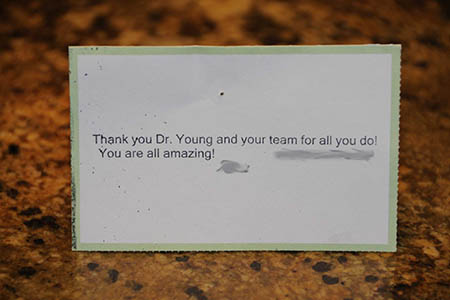Understanding Facial Moles and When to Consider Removal
Facial moles affect confidence and comfort for millions of Americans who have between 10 to 40 moles on their bodies. Most adults have between 10 and 40 moles somewhere on their body. While most moles don’t require treatment, many individuals choose facial mole removal for both cosmetic enhancement and health protection.
Moles can be removed for cosmetic reasons, especially when they appear in visible areas like the face or neck. These common skin growths develop during childhood or adolescence and vary in size, color, and texture. Understanding your options for safe, effective removal starts with recognizing the difference between cosmetic preferences and medical necessities.
H2: Cosmetic Benefits That Transform Confidence
H3: Aesthetic Enhancement and Self-Esteem
Moles in visible areas, such as the face or neck, can affect self-confidence. Professional mole removal procedures offer remarkable cosmetic transformations that boost self-esteem and create smoother, clearer skin. Many patients report feeling more confident in social and professional settings after removing prominent facial moles.
They can also be removed to improve a person’s appearance and lead to smoother and clearer skin and reduce skin irritation. When moles interfere with makeup application, shaving, or simply detract from your natural features, removal provides immediate aesthetic improvement. Modern techniques ensure minimal scarring, particularly when performed by experienced specialists who understand facial aesthetics.
H3: Addressing Physical Discomfort
Beyond appearance, moles that rub against clothing or jewellery can become irritated and uncomfortable. Facial moles near the hairline, collar area, or where glasses rest often cause daily irritation. You may also want to have normal moles or skin lesions removed if they rub against clothing or get in the way of shaving. Professional removal eliminates these daily annoyances while improving your overall comfort.
Critical Health Considerations for Safe Removal
Medical Evaluation and Cancer Prevention
Generally, moles are removed if your provider suspects they might be cancerous or for cosmetic reasons. Before any cosmetic procedure, thorough medical evaluation ensures your mole shows no signs of malignancy. Many skin cancers like melanoma begin in the shape of a mole. It is important to have any mole or skin lesion that changes in size and appearance, bleeds, appears asymmetrical, not uniform in color or has ragged edges examined by your doctor for early diagnosis and treatment.
Healthcare providers use the ABCDE method to evaluate suspicious moles:
- Asymmetry – One side differs from the other
- Border – Irregular or ragged edges
- Color – Uneven or multiple colors
- Diameter – Larger than 6mm
- Evolution – Changes over time
Professional vs. At-Home Removal Dangers
You should never remove a mole at home. Mole removal should be done by a medical professional like a dermatologist, who can send it to a lab to be evaluated for cancer. Attempting DIY removal creates serious risks including infection, excessive bleeding, and missing potential cancer diagnoses. Another risk of removing a mole yourself is that you can’t tell if a mole is cancerous. A mole could be melanoma. If you don’t have a dermatologist test the mole and it is cancerous, it could spread throughout your body and become life threatening.
Advanced Removal Techniques for Optimal Results
Surgical and Laser Options
Modern cosmetic mole removal employs various sophisticated techniques tailored to each patient’s needs. The doctor will employ either surgical shaving, surgical excision, cryotherapy or laser techniques to remove the mole. For facial moles, specialists often recommend:
Surgical Excision: Excision of moles or skin lesions is the most complete way to remove them. Excision removes the skin lesions completely and recurrence is less likely than with co2 laser removal. This method works best for deeper or larger moles requiring complete removal.
CO2 Laser Removal: Regarding the lip/mouth/nasolabial fold area, the co2 laser is used to take down the mole and targets only the area that needs to be treated. The laser can work on just the actual mole and limit the amount of tissue being worked on with little involvement of the normal tissue around the mole.
Shave Removal: Shave removal is often used for small, raised, non-cancerous moles. It usually causes little scarring.
Minimizing Scarring for Natural Results
Dermatologists and plastic surgeons, who are skilled in fine suturing techniques, typically handle more complicated or cosmetically sensitive cases. Minimizing scars is important when moles are on visible areas like the face, neck or hands. In these situations, a board-certified plastic surgeon can be especially helpful.
Advanced techniques ensure optimal healing with minimal visible scarring. Post-procedure care, including proper wound cleaning and sun protection, significantly impacts final cosmetic results.
The Dr. Philip Young Advantage in Seattle-Bellevue
For those seeking expert mole removal in the Seattle-Bellevue area, Dr. Philip Young offers unparalleled expertise combining medical precision with aesthetic artistry. Our goal is to remove your mole with the least scarring possible.
Dr. Young’s approach features:
- Advanced CO2 laser technology for precise removal
- Minimal scarring techniques refined over years of practice
- Personalized treatment plans considering facial aesthetics
- Comprehensive evaluation ensuring safe, effective results
At Northwest Face & Body, Dr. Philip Young specializes in removing moles and skin lesions without leaving visible scarring behind. His precise and expert techniques allow patients to achieve smooth, blemish-free skin so they can relax and walk with confidence.
Recovery and Long-Term Results
Immediate Aftercare
Once the area is numb, the procedure is quick and shouldn’t hurt. After the procedure, you may have stinging or burning around the area for a few days. Professional mole removal typically requires minimal downtime, with most patients returning to normal activities immediately.
Proper aftercare includes:
- Keeping the area clean and moisturized
- Applying prescribed ointments
- Protecting from sun exposure
- Following specific cleaning protocols
Expected Outcomes
I am so happy with the work you did removing my mole on my nose – its been over 6 mos and no sign of it returning and absolutely no scar! Patient testimonials consistently report satisfaction with both cosmetic results and the professional care received. Most scars fade significantly within months, becoming nearly imperceptible with proper care.
Conclusion: Making Your Informed Decision
Facial mole removal combines cosmetic enhancement with potential health benefits when performed by qualified professionals. Whether addressing aesthetic concerns or preventing medical complications, modern removal techniques offer safe, effective solutions with minimal scarring.
Before proceeding with removal, consult with experienced specialists who can evaluate your specific needs, discuss realistic expectations, and recommend the most appropriate technique. Professional evaluation ensures both beautiful cosmetic results and protection of your long-term health.
Take the first step toward clearer, more confident skin by scheduling a consultation with a qualified facial plastic surgeon or dermatologist. Your journey to smooth, beautiful skin begins with professional expertise and personalized care.


 Patient Reviews
Patient Reviews Cards From Patients
Cards From Patients Share Your Story
Share Your Story






